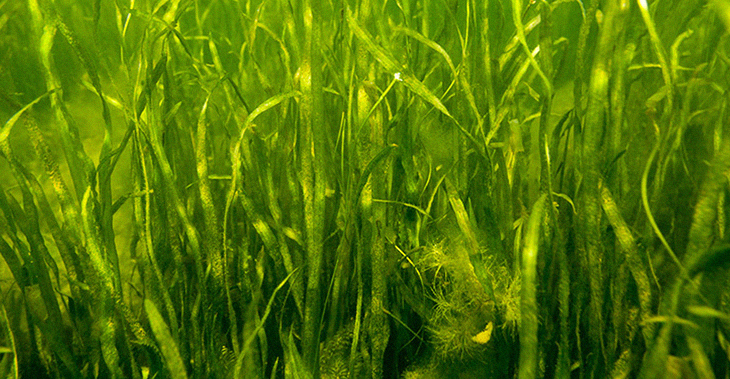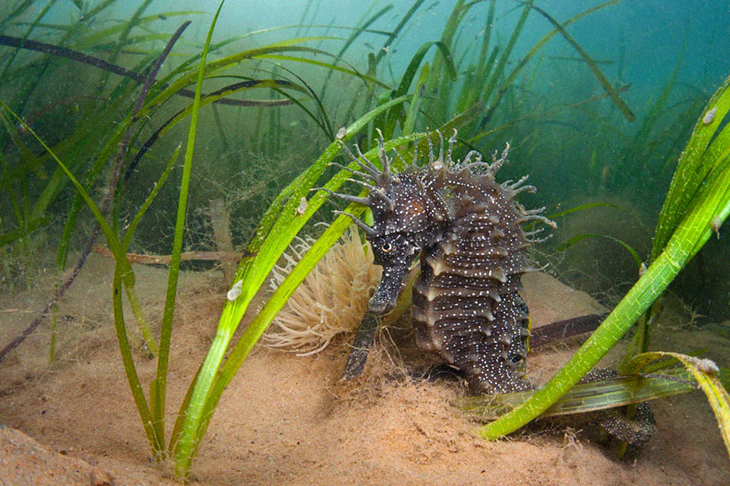
An experiment that has lasted for more than two decades has become a huge success, as well as the biggest success of its particular kind. This seagrass restoration project was started in Southeast Virginia, and it has proven that marine ecosystems are more resilient, and useful, than you might think.
Two decades ago, a group of marine scientists and volunteers worked together to spread over 70 million eelgrass seeds throughout a 200-hectre plot found off the eastern shore of the southern end of Virginia. The project was headed by the Virginia Institute of Marine Science, alongside The Nature Conservancy, who worked hand in hand to grow over 3,600 hectares in total. Those three thousand plus hectares, which basically equal 8,896 acres all in all, have made it the biggest seagrass restoration the world has ever seen.
In the 20 years that it took to create this huge ecosystem in Virginia, it allowed the scientists and researchers that were involved in its creation to see the process of the restoration from ‘infancy to adulthood.’ The team made sure to document every detail in order to produce a baseline, creating a foundation for those that want to do their own widespread seagrass restoration in other areas around the world. Seagrass restoration is important not just because it makes good homes for fish, but it is another way to help the planet and the planet’s current climate crisis. The Amazon is often referred to as the ‘lungs of the world’ since 20% of the world’s oxygen comes from there. But due to the density of poor soil conditions mixed with large amounts of rotting plant matter also means that it doesn’t have the same ability to store as much carbon as other forest ecosystems do, like the Taiga which is located in Russia.
Moreover, studies have shown that terrestrial forests aren’t actually the most sufficient at that job or even at absorbing CO2 and nitrogen from the atmosphere. It’s actually the coastal marine ecosystems including salt marshes, mangroves, kelp forests and seagrass beds that do a better job than the forests do.
One article that was posted by the WWF entitled 10 Reason to Hope talks about how ‘seagrass captures carbon up to 35 times faster than tropical rainforests and, even though it only covers 0.2% of the seafloor, it absorbs 10% of the ocean’s carbon each year, making it an incredible tool in the fight against climate change.’
The scientists of the restoration project also noted that the inshore lagoons in Virginia, where they have been working, noted that the area has been devoid of seagrass since 1930 due to hurricanes and diseases wiping them out. But since the team has managed to sow new seagrass seeds, they’ve noticed that the ecosystem has fared much better in the current years. Even though marine heatwaves have managed to destroy a multitude of meadows in their years of research, three years was all it took for them to restore their plant life, proving just how resilient seagrass really is.
In a changing climate, the resiliency of these mature seagrass beds can be seen as great strength. And that’s due to their ability to ‘sequester 1.3 times more carbon and 2.2 times more nitrogen in their roots and the soil around them,’ more than the younger seagrass beds can.
At the 20-year mark of the seagrass restoration, it was found that 3,000 metric tons of carbon – which is basically equal to 653 cars that have been driven for a year – as well as 600 metric tons of nitrogen have been sequestered by this project alone. The scientists shared how the water quality and animal life in the seagrass beds have improved since the restoration began as well.
Their study explains, “We witnessed a substantial decrease in mean turbidity levels during the summer months since the restoration was initiated within the meadow.”
According to coastal ecologist at the University of Virginia in Charlottesville, Karen McGlathery, “In my first years here, there was no seagrass and there hadn’t been for decades. Today, as far as I can swim, I see lush meadows, rays, the occasional seahorse. It’s beautiful.”

Researchers share that what makes this even more incredible is that the two-decade long study can be replicated and achieved in many other areas around the world with probable success. Especially in areas like Biscayne Bay in Florida, where such seagrass ecosystems once thrived before.
The study also shares, “As the world settles into the era of the Anthropocene, and regulatory agencies worldwide seek to conserve and recover valuable ecosystem services, our study provides a positive example that successful marine restorations are possible on the scales that contribute directly to human well-being.”
The results have also left a number of nature conservationists, scientists, marine ecologists and those working on climate change excited about what the study means for other nations around the world. Carlos Duarte, a marine ecologist from the King Abdullah University of Science and Technology in Thuwai, Saudi Arabia said that the outcome of the project is “a game changer.” He further explained, “it’s an example of how nature-based solutions can help mitigate climate change.”
What are your thoughts? Please comment below and share this news!
True Activist / Report a typo


